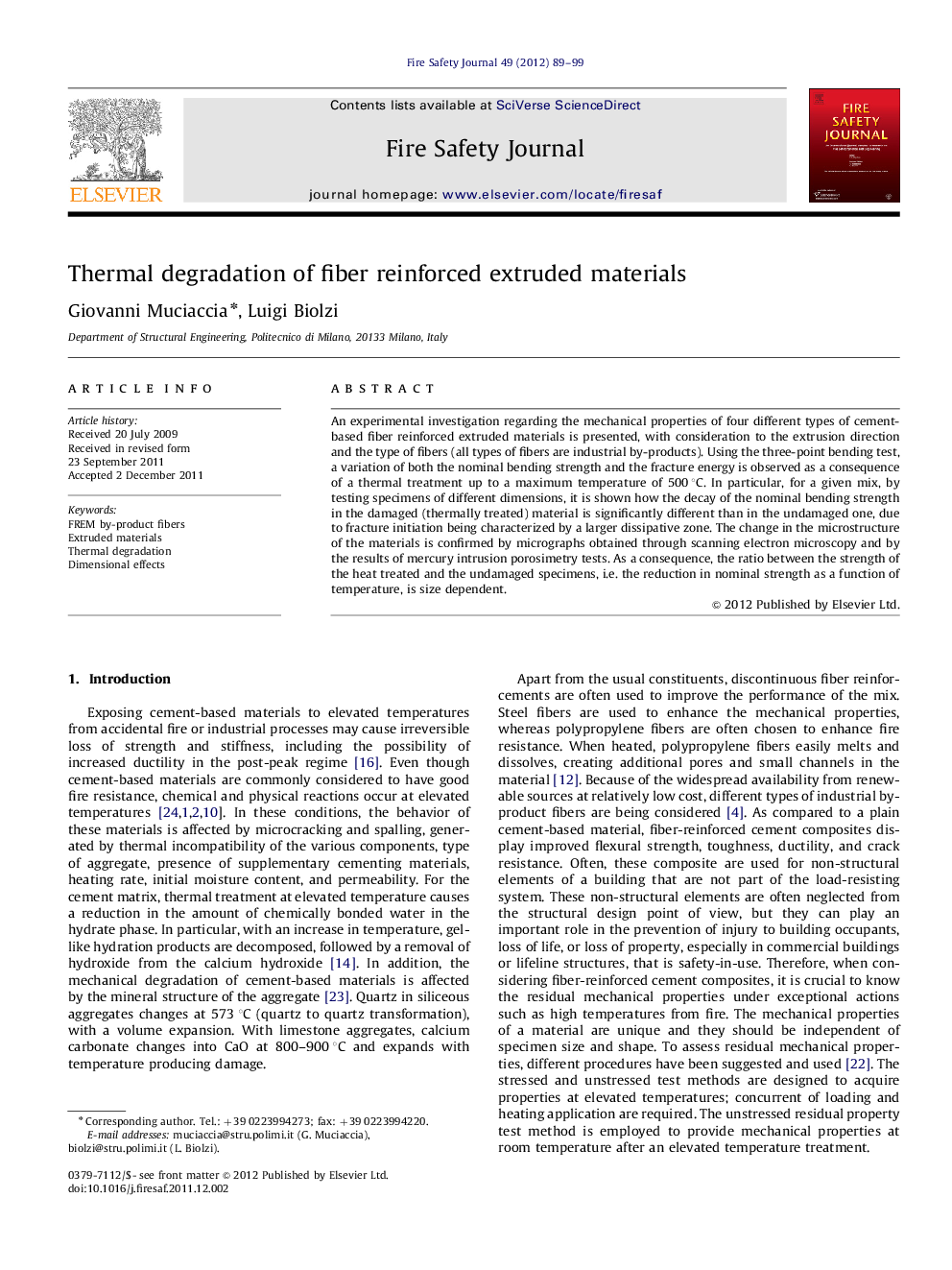| کد مقاله | کد نشریه | سال انتشار | مقاله انگلیسی | نسخه تمام متن |
|---|---|---|---|---|
| 270104 | 504728 | 2012 | 11 صفحه PDF | دانلود رایگان |

An experimental investigation regarding the mechanical properties of four different types of cement-based fiber reinforced extruded materials is presented, with consideration to the extrusion direction and the type of fibers (all types of fibers are industrial by-products). Using the three-point bending test, a variation of both the nominal bending strength and the fracture energy is observed as a consequence of a thermal treatment up to a maximum temperature of 500 °C. In particular, for a given mix, by testing specimens of different dimensions, it is shown how the decay of the nominal bending strength in the damaged (thermally treated) material is significantly different than in the undamaged one, due to fracture initiation being characterized by a larger dissipative zone. The change in the microstructure of the materials is confirmed by micrographs obtained through scanning electron microscopy and by the results of mercury intrusion porosimetry tests. As a consequence, the ratio between the strength of the heat treated and the undamaged specimens, i.e. the reduction in nominal strength as a function of temperature, is size dependent.
► Experimental investigation of the flexural behavior of fiber-reinforced extruded materials in both the extrusion and the transverse directions. The effects of high temperatures on the mechanical response were studied and the damage zone was observed with an optical technique.
► The observed differences in the bending strength in the directions parallel and transverse to the fibers have a tendency to reduce when a damage due to high temperatures is generated.
► The crack density increases with the exposure temperature, influencing both the strength and the post-peak response of the specimens.
► The effective dimensions of the fracture process zone increases with an increase in the severity of the thermal treatment, that is the fracture propagation is characterized by larger dissipative zones. As a consequence, the ratio between the strength of the heat treated and the undamaged specimens, i.e. the reduction in nominal strength as a function of temperature, is size dependent.
Journal: Fire Safety Journal - Volume 49, April 2012, Pages 89–99